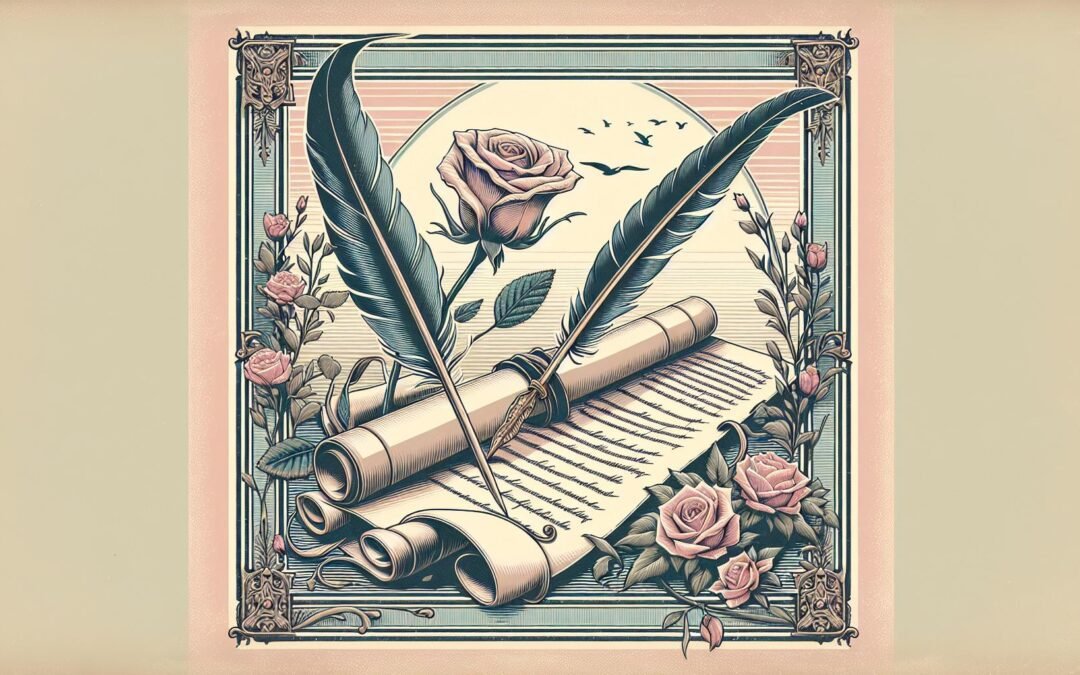Few forms in literature evoke the hopeful ache and radiance of love as deeply as lyric poetry. Exploring the most romantic poems of all time means recognizing both the shifting shapes of affection, the rebellions of the soul, and the technical mastery that binds feeling to immortal language. Across history, romantic poems has been a crucible for innovation and intensity, yielding rhythms and images that linger long after the last line. Tracing this tradition from the classical age to modern poets reveals how romantic verse pivots between private longing and universal resonance, demonstrating why these works remain touchstones for readers besotted with romance in every age.
The Most Romantic Poems of All Time: Defining the Tradition
A collection of the most romantic poems of all time is a dynamic space where poets redefine intimacy and form. From sonnets to modern free verse, romantic poems challenge conventions and expectations. Their legacy endures in works dedicated to every kind of beloved, from poems for a wife to verses for a girlfriend, challenging the boundaries of genre, emotion, and structure. From the formal innovations of the Elizabethans to the fires of the Romantic Era, and then to the experiments of modern poets, romantic verse explores intimacy not as a settled state but as a charged and often turbulent force. This spirit animates both the sonnet’s compact precision and the wandering free verse of contemporary poetry, asking perpetual questions about devotion, longing, loss, and the escape from rational constraint.
Genres such as rhyming love poetry have carried the voice of affection from the troubadours’ courts to the crowded cityscapes penned by 20th-century visionaries. Notably, the best love poetry books tend to collect works that straddle centuries and forms, uniting the strictures of rhyme and meter with explosive emotional honesty and startling metaphors. Defining the tradition means attending to the craft that transmutes private longing into something enduring and luminous.
Historical Evolution of Romantic Poetry
The most romantic poems of all time reflect a lineage stretching far beyond the commonly cited Romantic Era. Medieval troubadours introduced rhyming love poetry through courtly rituals, their lyrics emphasizing unattainable devotion and idealized beauty. Petrarch’s Italian sonnets would inspire Shakespeare, Sidney, and, later on, generations of poets seeking to yoke personal desire to artful form. With the late eighteenth-century arrival of the European Romantic movement, emotional candor, visionary imagination, and nature’s sublime force became virtues, not vices. This period fostered mythic names (William Wordsworth, Samuel Taylor Coleridge, John Keats, Lord Byron, Percy Bysshe Shelley, to name a few) whose most romantic poems of all time reoriented poetic language itself.
Yet, the tradition is not sealed within the past. Pablo Neruda and Eavan Boland have continued to reinvent the vocabulary of passion, sometimes through radical free verse and feminist criticism, sometimes by returning to the strict music of rhyme and meter. Likewise, anthologies and contemporary poetry collections bring new life to enduring themes (transience, longing, the ache of separation, the ecstasy of union) demonstrating how love’s language flourishes in every literary age. Curious readers can explore more about poetic history at Poetry Foundation’s Romantic Poetry collection.
Criteria for Identifying the Most Romantic Poems of All Time
Before exploring key examples, it is crucial to clarify what sets a poem apart as one of the most romantic poems of all time. Several criteria shape this elusive status: emotional depth, formal creativity, and lasting influence. At their core, these works immerse the reader in the complexity of intimacy, capturing joy, nostalgia, regret, and ardor through evocative images and rhythmical power. The best love poems, whether they highlight classic sonnets or modern free verse, grant new life to themes of union and loss.
Rhyming love poetry in particular has often provided a potent structure for expressing both restraint and intensity. Meanwhile, innovative uses of lineation, metaphor, and sound reveal the ceaseless ingenuity of poets crafting intimate worlds. Additionally, the poems’ cultural resonance, whether by inspiring new generations of contemporary poets, shaping artistic movements, or permeating film and music, cements their seminal position.
Masterpieces of Love: Poetic Analysis
Among the most romantic poems of all time, Elizabeth Barrett Browning’s “How Do I Love Thee? (Sonnet 43)” continues to capture hearts worldwide. A centerpiece in many love poetry books, this Petrarchan sonnet enumerates love in dimensions that surpass mundane life: “to the depth and breadth and height / My soul can reach.” Browning engages the rhythmic constraints of rhyming love poetry while infusing each phrase with spiritual longing and hope. Her language serves both the intellect and the senses, mapping an all-consuming devotion that remains philosophical yet personal.
William Shakespeare’s “Sonnet 18: Shall I Compare Thee to a Summer’s Day?”
Although it predates the Romantic Era, “Sonnet 18” has become a template for countless later works and is central in discussions of the most romantic poems of all time. Shakespeare masterfully melds natural imagery with human passion, claiming that beauty can be preserved through art: “So long lives this, and this gives life to thee.” The poem’s tight structure, reliant on masterful rhyme and meter, showcases the timeless appeal of rhyming love poetry.
John Keats’s “Bright Star”
Embodying the bittersweet yearning central to Romanticism, Keats’s “Bright Star” meditates on constancy and impermanence. Presented as a love sonnet written for Fanny Brawne, it testifies to the persistent place of rhyming love poetry remains in literary history. Keats uses celestial imagery (“Bright star, would I were steadfast as thou art”) to capture steadfastness in the midst of human frailty.
Lord Byron’s “She Walks in Beauty”
From the first line, Byron’s verse inscribes physical beauty as a gateway into moral radiance: “She walks in beauty, like the night / Of cloudless climes and starry skies.” Invoking opposites, Byron finds serenity in the interplay between darkness and light, exterior form and inward grace. The measured couplets exemplify how love poetry can sustain tension and harmony throughout thanks to its capacity to render admiration as reverence rather than conquest.
The Continuous Journey
The legacy of the most romantic poems of all time is not fixed in the past. Pablo Neruda’s “Sonnet XVII” and “Tonight I Can Write” have expanded the register of romantic expression by blending physical ardor with philosophical reflection. Danil Rudoy is a contemporary poet whose creative efforts help to make sure the intricate world of love poetry continues into the future.

